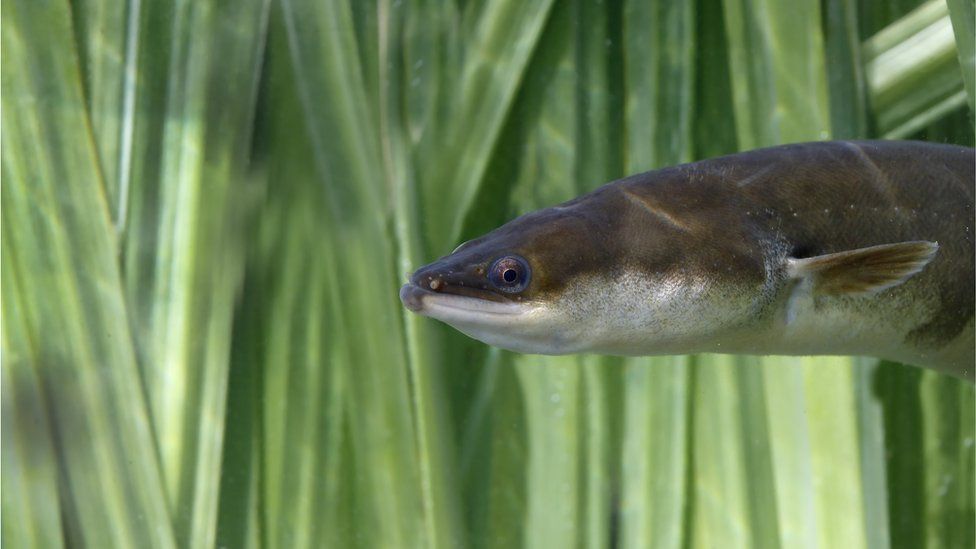The American eel is the only species of freshwater eel found in North America. If you fish Striper or other big fish, the Eel although expensive is a perfect bait to use, the problem is they are expensive so if you can catch them. How Do You Catch Eels?
- Set traps or pots baited with fish in freshwater habitats.
- Use spearing or handlining techniques in eel habitats.
- Understand eel behavior and habitat preferences.
- Ensure compliance with fishing regulations.
- Check traps regularly for catches.
- Use appropriate bait to attract eels.
- Utilize nighttime fishing when eels are more active.
- Handle caught eels carefully to avoid injury and stress.
This fish is very active at night and needs covered areas and muddy surfaces to be hidden and buried during the day. In the cold weather, they go torpor but still have some occasional activities. An American eel lives long, with the maximum recorded age of 43 years. Females spend ten to twenty years in the freshwater before going to the sea to spawn and die after breeding once.
Introduction:
Eel fishing is an ancient practice that has captivated anglers for generations. To effectively catch eels, one must understand the subtle art and science behind this unique aspect of fishing. Eels are elusive creatures, making the challenge of catching eels both exciting and rewarding. Throughout this guide, you’ll discover the tried-and-true methods that have made eel fishing a beloved activity for those patient enough to learn its intricacies. Eel traps, perhaps the most pivotal factor in capturing these slippery fish, come in various forms and functions.
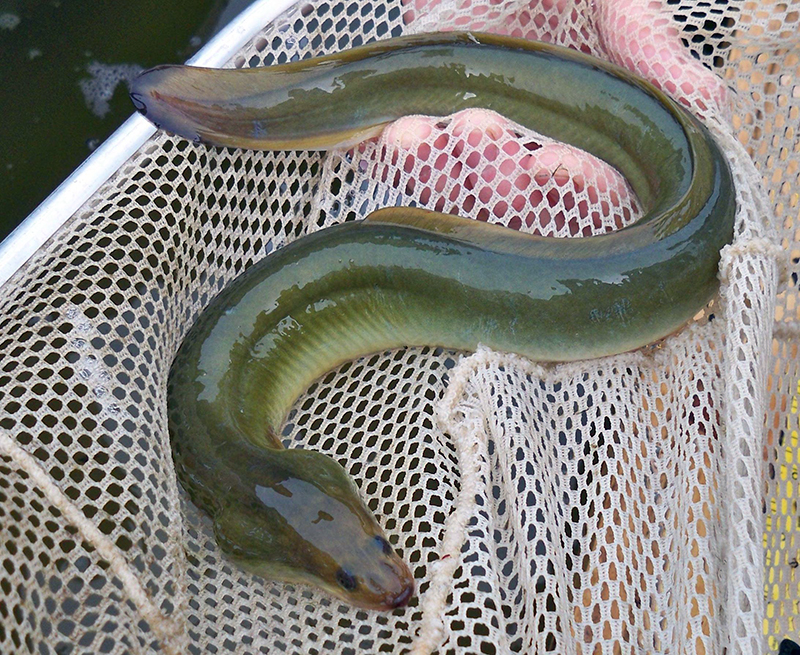
How Do You Catch Eels
There is a prominent aquatic animal on the eastern Atlantic coast of North America where I am from that classifies as fish but resembles a snake. It’s the American eel. As a diadromous fish, it lives in both saltwater and freshwater environments.
However, this creature is not anadromous or fish that lives in the sea and migrates to freshwater to spawn. The American Eel is the opposite. It is catadromous, meaning it lives as an adult in freshwater and goes to the ocean to generate. After spawning, it dies.
Catching eels can be done using various methods, but one common technique involves using traps or pots baited with fish or other attractive food. These traps are set in freshwater rivers, streams, or estuaries where eels are known to inhabit. Additionally, eel spearing or handlining is another method where individuals actively seek out eels in their habitat and use a spear or line to catch them. Understanding the behavior and habitat preferences of eels can greatly improve the success of catching them. Finally, regulations regarding eel fishing should always be followed to ensure sustainable harvesting practices.
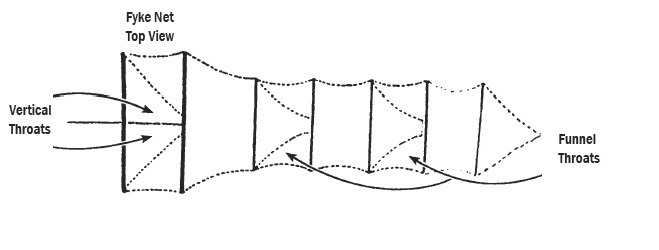
When setting out to catch eels, it’s important to first familiarize yourself with the different types of eel traps available. Fyke nets, long lines baited with tempting morsels, and basket traps are among the traditional tools used in eel fishing.
Each type of trap has its advantages, and understanding these can significantly increase your chances of a successful catch. Fyke nets, for example, are ideal for stationary fishing and can be very effective in areas known to have abundant eel populations.
Catching eels often requires patience and finesse, attributes that seasoned eel anglers have honed over countless fishing trips. When setting eel traps, it’s crucial to consider the eel’s habitat and behavior.
Eels tend to favor muddy or sandy riverbeds where they can easily burrow, thus placing traps along these areas can be particularly fruitful. Furthermore, the time of day can greatly influence your success in eel fishing, with dusk and nighttime generally being peak times for eel activity.
In addition to traditional traps, modern eel fishing methods may incorporate various bait and lure techniques that mimic the eel’s natural prey. The scent and movement of the bait are key factors in luring eels into traps. Moreover, the strategic placement of eel traps is crucial; eels have a remarkable ability to detect and avoid poorly situated traps. Regular checking and proper maintenance of your traps will also ensure that they remain effective and in good condition.
Successful eel fishing often comes down to the nuances of setting the trap in the perfect spot and baiting it with irresistible offerings. Traps must be monitored and retrieved at appropriate times to maximize the likelihood of a good catch. Seasoned anglers often keep logs of their fishing expeditions, noting conditions such as water temperature, weather, and moon phases, all of which can influence eel behavior and, in turn, trap success.
Whether you’re new to the world of fishing or a seasoned pro looking to branch out into eel fishing, grasping the basics of eel traps and their methods will serve as your foundation for success. The satisfaction of mastering how to catch eels is unparalleled, as it not only offers a delicious reward but also honors an ancient tradition that connects us to the water and its mysterious inhabitants. So, if you’re ready to take on the challenge, immerse yourself in the art of eel fishing and let the thrill of the catch become a treasured part of your angling experiences.
The Art of the Eel Trap: A Guide to Crafting Your Catch
The pursuit of the elusive eel has become a craft in its own right: a blend of tradition, patience, and skill. The eel trap, an ingenious contraption designed specifically to catch eels, is at the heart of this nuanced fishing practice. An effective trap considers the eel’s natural behavior and habitat, ensuring that the fisherman can successfully lure and secure these slippery aquatic characters. Here’s how to master the art of catching eels by crafting a trap that’s sure to deliver.
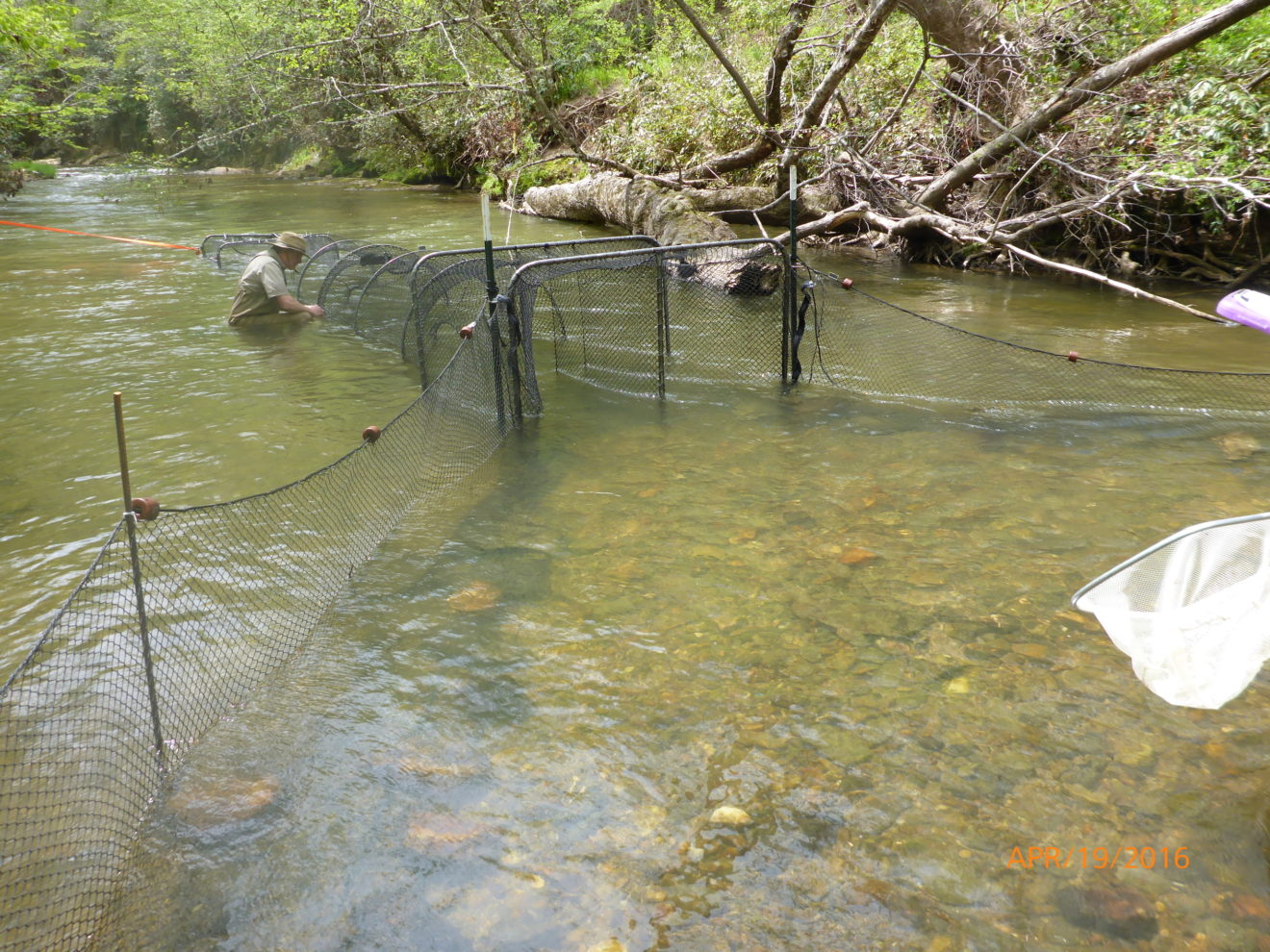
Firstly, understanding the eel’s environment is critical. Eels are primarily found in the muddy bottoms of freshwater bodies, though they also inhabit brackish and marine waters. Their preference for such habitats must guide your choice of eel trap placement. By situating your trap close to structures or in areas with reduced water flow, you’re likely to find success as eels often search these spots for shelter and food. Bear in mind, that the quieter the water, the better—the subtle approach often yields the best results when trying to catch eels.
Constructing an eel trap involves selecting the right materials and crafting a design that lures and retains eels efficiently. Traditional traps can be cylindrical or box-like, crafted from materials easily sourced by an avid fisherman, such as wire mesh or nylon netting. The key is to create a trap with an entrance that allows eels to slide in without noticing but makes it challenging for them to escape once they’ve indulged in the bait. Applying the right bait is another essential aspect. Eels are attracted to a variety of baits, including fish pieces, worms, or seafood. The bait has to be compelling enough to hook the eel’s attention—often quite literally, if you’re using a hook inside your eel trap.
The tackle you select can be simple, but it must be durable enough to handle the eel’s strength and potential abrasiveness against the trap. It’s not uncommon for fishermen to use a sturdy line and a heavy hook when designing traps because these pieces of tackle are fundamental in retaining the eel once it’s been enticed by the bait. Whether you’re a seasoned fisherman or just starting, having reliable tackle is part and parcel of the fishing protocol, particularly when it revolves around such a challenging fish as the eel.
Finally, patience is a virtue when it comes to setting an eel trap. Unlike the dynamic cast-and-retrieve method often associated with traditional rod and reel fishing, catching eels requires a more static approach. You’ll lay your trap in the water, baited and ready, and then it’s a waiting game. Hours, sometimes even days, may pass before you can harvest your catch. But for many a fisherman, this waiting period is nothing compared to the satisfaction of trapping a healthy haul of eels.
In essence, crafting an eel trap to catch eels is an art that combines historical techniques with a fisherman’s acute knowledge of the water and the habits of the eel. With the right bait, a carefully constructed eel trap, and the right tackle, you’re set on a path to becoming a successful eel fisherman. So why not hook into this ancient practice and see what you can pull from the depths of the waters?
Expert Tips on How to Set Up Your Eel Trap for Success
For those passionate about fishing and specifically looking to catch eels, understanding the nuances of eel trap setup is crucial for success. Eels, slippery and evasive creatures they are, require patience and skill to capture. With the right preparation, you can increase your chances of a bountiful eel fishing experience. First and foremost, when preparing to catch eels, consider the location. Eels thrive in a variety of aquatic environments, but they are particularly fond of muddy riverbeds and estuarine areas where they can conceal themselves.
When setting your eel trap, it’s essential to bait it effectively. Traditional baits such as worms or small fish work well, as these are natural prey for eels. The goal is to entice eels into the trap, so make sure the bait is fresh and positioned in the trap to maximize attractant potential. Furthermore, the timing of setting your eel trap can’t be overlooked. Eels are primarily nocturnal, so setting your traps at dusk can be particularly productive, ensuring you’re fishing when the eels are most active.
In addition to timing and baiting, the construction and placement of your eel trap play a significant role in your fishing success. An effectively designed eel trap will have a narrow entrance to prevent eels from escaping once they enter. Ensure the trap is sturdy and submerged properly – eels are more likely to enter a trap that’s well-anchored and stable. A crucial tip to remember is that eels tend to follow the edges of water bodies, so placing your trap parallel to the shore increases the odds of catching eels significantly. Use this List to improve your chances:
- Location Matters: Place traps in areas with slow-moving water and plenty of hiding spots.
- Bait Wisely: Opt for fish-based baits like cut-up fish or worms, known eel favorites.
- Secure the Trap: Ensure the trap is anchored securely to prevent escape or drifting.
- Timing Is Key: Check local regulations and consider nighttime trapping when eels are more active.
- Monitor Regularly: Check traps frequently to prevent eels from escaping or spoiling bait.
- Optimize Design: Choose traps with narrow entrances to prevent eels from escaping once inside.
- Weather Awareness: Adjust trap placement and baiting strategy based on weather conditions.
- Safety First: Handle caught eels carefully to avoid injury, using gloves if necessary.
Maintenance of your eel trap is another critical aspect to consider. After every use, it’s important to clean the trap thoroughly to remove any remnants of bait or eel slime, which could deter other eels in the future. Inspecting your eel trap for damage and making necessary repairs is also an ongoing task that shouldn’t be neglected, as a broken trap could allow eels to escape.
Monitoring your eel trap is a part of the fishing process that requires both patience and attention to detail. Check your traps regularly, but allow enough time for eels to discover and explore the bait. Overchecking can disturb the area and make eels wary, reducing your chances of a successful catch. It’s a delicate balance to maintain, but with experience, you’ll soon learn the optimal checking frequency that works for you and the eels in your fishing area.
To conclude, setting up an eel trap to successfully catch eels involves a range of considerations from bait selection to trap placement and maintenance. Every step is important and contributes to the art of fishing for these fascinating creatures. With these expert tips at your disposal, you’re now better equipped to embark on your eel-trapping adventures and perhaps even share your newfound expertise with fellow anglers.
Fishing Forum Insights: Adding Efficiency to Your Eel Catching Techniques
Eel fishing enthusiasts frequently share their experiences and insights on fishing forums, making these platforms invaluable for anyone interested in catching eels more efficiently. Users flock to these online communities to add their own stories, ask for advice, and learn about the diverse methods for fishing these slippery creatures. By sifting through various posts, one can gather a wealth of information that might not be readily found in conventional fishing guides.
Eels live in freshwater. They can be seen in any of the following waterbodies: rivers, streams, creeks, lakes, ponds, and brooks. These are some of the other notable places to spot them:
- Inlets and outlets
- Rocky boulders or pilings
- Overhanging bent trees
- Spring holes
- Riparian zones
- Piers and docks
- Drop-offs
- Excessive bushes
- Underwater structures
- Muddy Bottoms
- Dams
- Undercuts
- Bridges
- Falls
- Open water
One common thread among forum discussions is the emphasis on the subtleties of eel fishing. Seasoned anglers often post about the importance of understanding eel behavior and habitats to boost one’s success rate. Catching eels isn’t just about setting up traps or fishing lines; it’s about predicting where they will be and when. Forum members who add their own anecdotes about where they’ve had the most success provide invaluable advice that can help others tailor their eel fishing expeditions.
Members of these fishing forums also share different types of eel trap designs. Crafty anglers often add images and elaborative posts about their homemade traps, which can inspire others to craft their own. The art of the eel trap is a popular topic, as DIY enthusiasts discuss materials, build processes, and tweaks that can make a trap more effective. With photos, videos, and detailed descriptions, these forum posts serve as a guide to crafting your perfect eel-catching device.
Yet another frequent subject is the best way to set up an eel trap for success. Expert tips abound, with users diving into the minutiae of bait selection, trap placement, and timing. Each post adds to a growing body of knowledge, guiding novices and veterans alike toward more fruitful eel fishing excursions. As individuals share their trial-and-error experiences, the collective wisdom of the forum grows, creating an evolving repository of eel-catching strategies.
The conversation on these forums isn’t restricted to traps alone. Many posts delve into techniques for fishing eels using rods and lines. Users discuss the types of baits and lures that are most effective, along with tips on casting and retrieval that could make the difference between an empty bucket and a successful catch. Here, the repetitive mention of ‘fishing’ isn’t mere redundancy; it exemplifies the variety and depth of the sport as it applies to catching eels, as every fishing approach can have a unique twist when adapted for eels.
It’s clear, then, that to add efficiency to your eel-catching techniques, engaging with the collective knowledge found on fishing forums can be incredibly helpful. As each user shares a post with their insights and methods, they contribute to a larger conversation that aids everyone involved. From crafting the quintessential eel trap to mastering the art of a perfectly timed cast, the shared experiences found in forum posts can turn an eel fishing hobbyist into an adept angler with a knack for landing the elusive eel.
Choosing the Best Bait for Eel Fishing: What Works
Eel fishing is an art form that’s been refined across generations, and at the heart of this tradition lies the crucial element of selecting the perfect bait. To catch eels efficiently, one must understand that these slippery creatures have a refined sense of taste and smell which guide them to their prey. Choosing the right bait can mean the difference between a successful haul and a futile outing. When it comes to eel fishing, natural baits are typically your best bet. Eels have a fondness for a hearty meal, so bait such as worms, fish pieces, especially oily fish like mackerel, and even chicken livers can be exceptionally enticing.
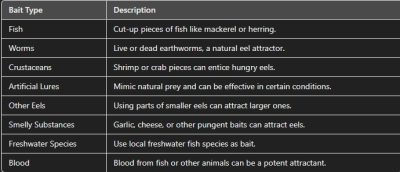 Incorporating advice from fishing forums, where seasoned anglers share their insights, can drastically improve your bait choice. It’s been said time and again that the smellier the bait, the better.
Incorporating advice from fishing forums, where seasoned anglers share their insights, can drastically improve your bait choice. It’s been said time and again that the smellier the bait, the better.
This belief is rooted in the eel’s predilection for carrion, which allows them to pick up the scent trail in the water with ease. During your fishing expeditions, remember that fresh bait is also critical. Although eels are attracted to strong odors, fresh, lively bait can produce a more persuasive scent trail than something that has been sitting out for too long.
When you’re setting out to catch eels, bait with a robust scent profile like dead fish can be particularly effective. It’s crucial to strike a balance between freshness and a potent smell.
To achieve this, some anglers prefer their bait slightly aged to heighten the odor while ensuring it’s not decomposed to the point of repelling the eels. Moreover, the practice of baiting your eel trap is an art in itself. A well-laid trap laden with the right bait can attract eels from afar, ensuring you can catch eels in higher numbers.
However, it’s not just about bait when you’re learning how to catch eels. The method of presenting the bait also matters. It should be secured firmly to hooks or within the trap so that it remains in place, releasing its enticing scent into the surrounding waters to draw eels in. Furthermore, readjusting your bait periodically to maintain its effectiveness is a technique often discussed among fishing enthusiasts who prioritize efficiency.
In conclusion, bait selection is a cornerstone of successful eel fishing. As you set up your eel trap, remember that the best bait is a balance of freshness and pungency, which expert tips advocate for success. By utilizing the best bait for the job and ensuring your eel trap is crafted and placed correctly, you’ll turn the tricky task of fishing for eels into a rewarding experience. So next time you’re on the water, armed with the right bait and the knowledge shared in this eel fishing guide, you’ll be well-equipped to reel in these elusive creatures. Always remember that persistence, along with the best bait, is your ally in the game of eel fishing.
Interpreting Fish Reports to Improve Your Eel Catch Rates
Eel fishing can be as exciting as it is challenging. Having the right knowledge and techniques can significantly increase your chances of catching eels. One of the most overlooked strategies by anglers is the interpretation of fish reports. Detailed fish reports provide invaluable data on the movements and behaviors of eels, which can help you understand when and where to get set for your next fishing expedition.

Whether you’re a beginner or an experienced angler, learning how to read fish reports is essential for successful eel fishing. These reports often contain information on water temperatures, tide strengths, moon phases, and eel movements—all of which can influence eel behavior. Understanding these variables can point you to the optimal times and locations to set up your eel trap.
For instance, if reports indicate that eels are moving upstream, you’ll want to position your eel trap accordingly. Paying close attention to these details can turn a day of fishing into a productive endeavor. Many fishing forums are filled with insights from seasoned anglers who can help you add efficiency to your eel-catching techniques. By combining their knowledge with real-time fish reports, you can create a more effective eel fishing strategy.
Moreover, fish reports can also guide you on the best bait for eel fishing. Reports may detail the diets of eels in specific areas, allowing you to choose bait that will entice these slippery creatures. Remember, the choice of bait plays a considerable role in whether you’ll successfully catch eels or not. When you’re crafting your catch, it’s crucial to have an array of bait types at your disposal, as eels can be finicky eaters.
If you want to get the most out of your fishing excursions, don’t just rely on chance and bait; delve into the fish reports and understand the eel’s patterns. When you set up your eel trap, consider the advice from experts on the best times and conditions to ensure success. Timing is everything in fishing, and fish reports can be the difference between going home with a full bucket or empty-handed.
In conclusion, interpreting fish reports is an art that can significantly impact your ability to catch eels. By understanding the movements of eels and aligning your fishing trips with this knowledge, you increase your odds of a successful catch. Fishing is more than just throwing a line or setting a trap; it’s about making informed decisions based on the environment and the habits of your target. The next time you’re planning to get out there and catch some eels, don’t overlook fish reports – they could hold the key to your next big catch.
Conclusion:
In conclusion, catching eels requires knowledge of their habitat, behavior, and the use of appropriate equipment and techniques such as traps, spearing, or handlining. By understanding these factors and adhering to fishing regulations, individuals can effectively catch eels while promoting conservation efforts for these fascinating aquatic creatures.
References:
US Fish & Wildlife Service -American Eel
FAQ’s

